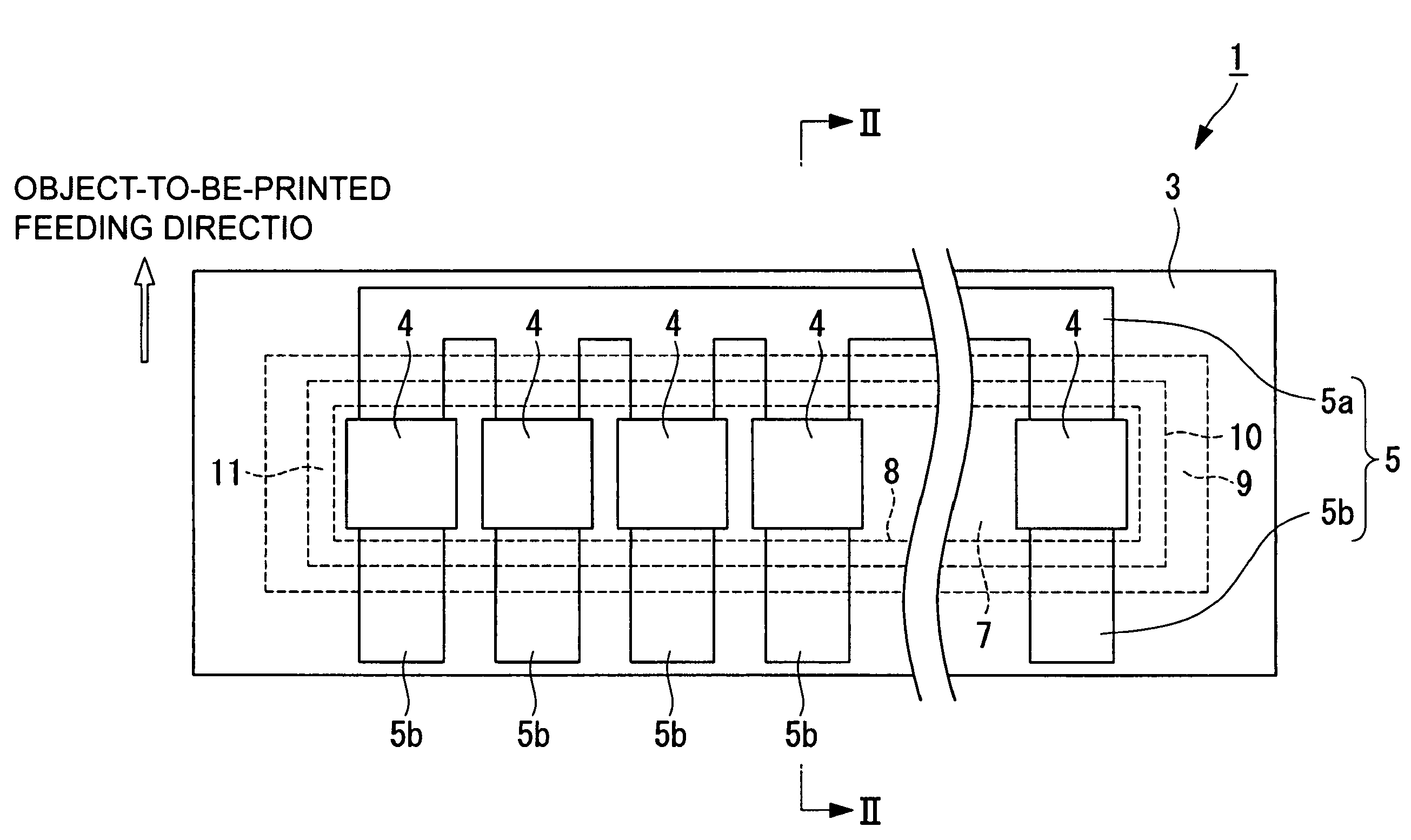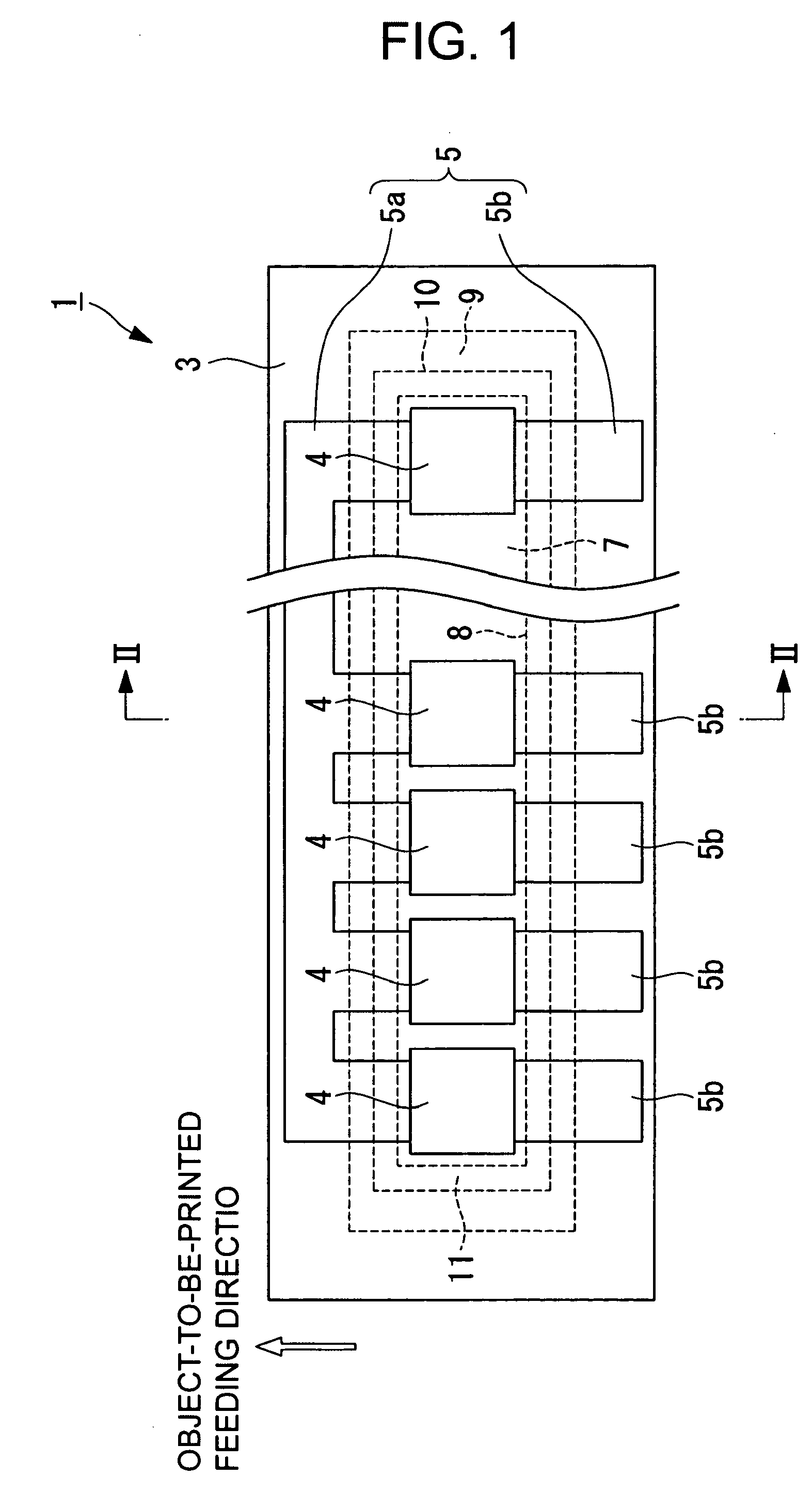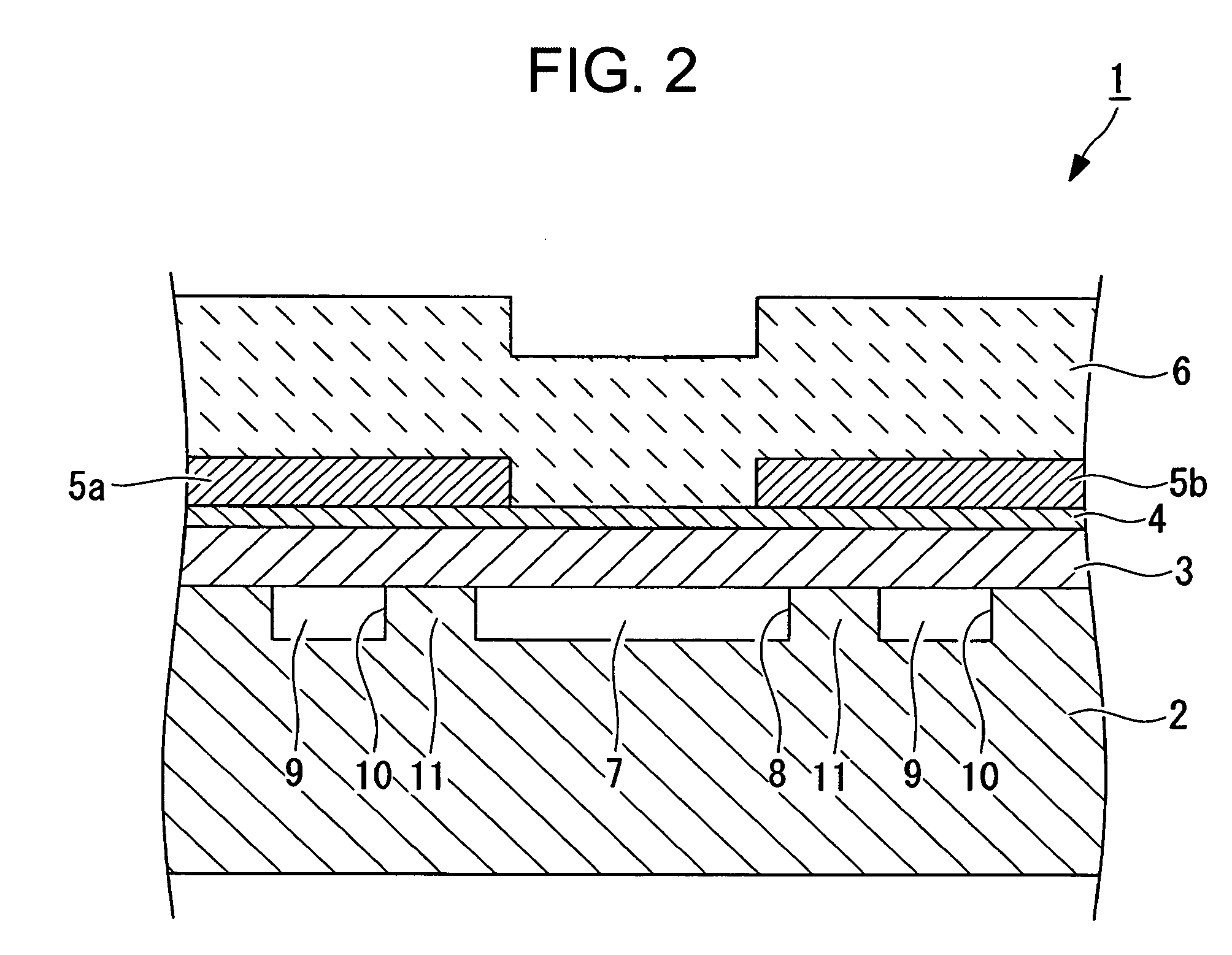Heating resistance element component and thermal printer
a technology of heating resistors and components, applied in the field of heating resistor components and thermal printers, can solve the problems of reducing heating efficiency and difficulty in obtaining a sufficient strength to the external load, and achieve the effects of reducing power consumption, preventing heat generation in the heating resistor, and increasing the heating efficiency of the heating resistor
- Summary
- Abstract
- Description
- Claims
- Application Information
AI Technical Summary
Benefits of technology
Problems solved by technology
Method used
Image
Examples
first embodiment
[0038]Hereinafter, a heating resistance element component according to the present invention is described with reference to FIG. 1 to FIG. 5.
[0039]FIG. 1 is a plan view of a thermal head which is a heating resistance element component according to this embodiment, which shows a state where a protective film is removed. FIG. 2 is a view taken along an arrow II-II of FIG. 1. FIGS. 3A to 3E are flow charts for describing a method of manufacturing the thermal head which is a heating resistance element component according to this embodiment. FIG. 4 is a graph showing calculation results of heating efficiency of the thermal head with a thickness of an undercoat (insulating film) being as a parameter. FIG. 5 is a graph showing calculation results of the heating efficiency of the thermal head with a thickness of a first void heat insulating layer and a thickness of a second void heat insulating layer being as a parameter.
[0040]A heating resistance element component 1 according to this embod...
second embodiment
[0067]A thermal head according to the present invention is described with reference to FIG. 6.
[0068]FIG. 6 is a plan view of the thermal head according to this embodiment, which shows a state where the protective film is removed.
[0069]As shown in FIG. 6, a thermal head 21 according to this embodiment is different from the thermal head 1 described above according to the first embodiment in that a second concave portion 22 is formed in place of the second concave portion 10. Other components of the thermal head 21 are the same as those of the thermal head 1 described above according to the first embodiment, and thus their descriptions are omitted here.
[0070]The second concave portion 22 includes a concave portion 22a which extends linearly along the arrangement direction of the heating resistors 4 on the common wire 5a side and a concave portion 22b which extends linearly along the arrangement direction of the heating resistors 4 on the individual wire 5b side.
[0071]The concave portio...
third embodiment
[0074]A thermal head according to the present invention is described with reference to FIG. 7.
[0075]FIG. 7 is a plan view of the thermal head according to this embodiment, which shows a state where the protective film is removed.
[0076]As shown in FIG. 7, a thermal head 31 according to this embodiment is different from the thermal head 1 described above according to the first embodiment in that first concave portions 32 are formed in place of the first concave portion 8. Other components of the thermal head 31 are the same as those of the thermal head 1 described above according to the first embodiment, and thus their descriptions are omitted here.
[0077]The first concave portions 32 are concave portions which are formed along the arrangement direction of the heating resistors 4 such that first hollow portions (first void heat insulating layers) 33 are individually located in respective regions covered by the heating portions of the heating resistors 4 (such that rear surfaces of the ...
PUM
 Login to View More
Login to View More Abstract
Description
Claims
Application Information
 Login to View More
Login to View More - R&D
- Intellectual Property
- Life Sciences
- Materials
- Tech Scout
- Unparalleled Data Quality
- Higher Quality Content
- 60% Fewer Hallucinations
Browse by: Latest US Patents, China's latest patents, Technical Efficacy Thesaurus, Application Domain, Technology Topic, Popular Technical Reports.
© 2025 PatSnap. All rights reserved.Legal|Privacy policy|Modern Slavery Act Transparency Statement|Sitemap|About US| Contact US: help@patsnap.com



